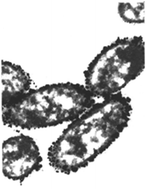Dehalogenation of polychlorinated biphenyls and polybrominated diphenyl ethers using a hybrid bioinorganic catalyst†
Abstract
The environmentally prevalent polybrominated diphenyl ether (PBDE) #47 and polychlorinated

* Corresponding authors
a
School of Geography, Earth and Environmental Sciences and School of Biosciences, The University of Birmingham, Edgbaston, Birmingham, UK
E-mail:
S.J.Harrad@bham.ac.uk
Fax: +44 (0)121 414 3078
Tel: +44 (0)121 414 7298
b School of Biosciences, The University of Birmingham, Edgbaston, Birmingham, UK
The environmentally prevalent polybrominated diphenyl ether (PBDE) #47 and polychlorinated

 Please wait while we load your content...
Something went wrong. Try again?
Please wait while we load your content...
Something went wrong. Try again?
S. Harrad, M. Robson, S. Hazrati, V. S. Baxter-Plant, K. Deplanche, M. D. Redwood and L. E. Macaskie, J. Environ. Monit., 2007, 9, 314 DOI: 10.1039/B616567B
To request permission to reproduce material from this article, please go to the Copyright Clearance Center request page.
If you are an author contributing to an RSC publication, you do not need to request permission provided correct acknowledgement is given.
If you are the author of this article, you do not need to request permission to reproduce figures and diagrams provided correct acknowledgement is given. If you want to reproduce the whole article in a third-party publication (excluding your thesis/dissertation for which permission is not required) please go to the Copyright Clearance Center request page.
Read more about how to correctly acknowledge RSC content.
 Fetching data from CrossRef.
Fetching data from CrossRef.
This may take some time to load.
Loading related content
